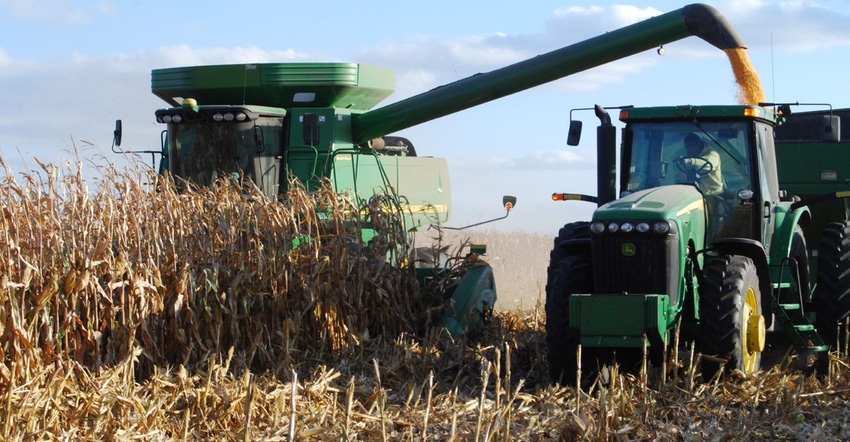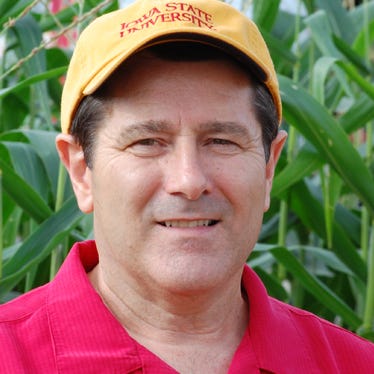October 25, 2019

Plan to attend one of the nearly 70 farm bill meetings held in November and December across Iowa. A primary topic of discussion will be the two-year election and enrollment in the Agriculture Risk Coverage and Price Loss Coverage programs.
While the deadline to sign up for these programs isn’t until March 15, producers will want to gather data and learn to use the ISU Extension ARC-PLC payment analyzer. This should simplify a farmer’s program enrollment decision that will likely come later this winter.
Under the 2018 Farm Bill, producers and farmland owners can sign up by commodity crop and by FSA farm number in ARC-County (ARC-CO) or PLC. Or they can sign up the entire farm in ARC-Individual (ARC-IC). Those program elections will apply for the 2019 and 2020 crop years. Beginning in 2021, producers can change their program election and enroll annually.
Program changes
Congress made some subtle changes to the ARC and PLC programs. Payments, if made, will be for the county where the farm is located. Yields used to calculate the ARC-CO benchmark revenue will primarily come from crop insurance, and these county yields will be trend-adjusted. As a result, use of the USDA Risk Management Agency data will likely create larger yields and, thus, higher county benchmark revenue calculations.
In addition, the numbers used to calculate this county benchmark revenue by crop annually will be lagged by one year. Beginning with the 2019 crop, the 2013 through 2017 crop yields, national cash prices and benchmark revenues will be used.
Current reference prices for corn ($3.70 a bushel), soybeans ($8.40) and wheat ($5.50), and reference prices for other commodities remain the same as the 2014 Farm Bill and can’t decrease below those levels. However, if Marketing Year Average (MYA) national cash prices were to move higher over the next few years, then the reference prices for ARC and PLC can increase. This effective reference price could increase by as much as 15% for commodity crops, but only after several years of much higher national cash prices.
USDA reminds producers that enrolling in ARC and PLC programs can affect eligibility for the Supplemental Coverage Option crop insurance program. Producers who enroll in ARC aren’t eligible to purchase SCO on those insured acres. But producers who enroll in PLC can buy an SCO policy through their crop insurance agent. This annual purchase must be made by March 15, which is the spring sales closing deadline for crop insurance.
Expect lower potential payments
Payments for PLC were nonexistent for corn and soybeans in the 2014 and 2015 crop years, but they increased during the latter part of that farm bill. Thus, Congress added the option for the 2018 Farm Bill for producers to switch programs annually starting in 2021.
In the 2014 Farm Bill, producers made a five-year election and enrolled annually nearly 98% of Iowa’s corn and soybean base acres in ARC-CO. The main reason was most counties in Iowa would trigger annual payments exceeding $70 per corn base acre the first two years of the program. However, the MYA national cash price used to determine these payments declined in subsequent years. Thus, PLC payments were triggered on corn base acres that were elected in 2016, 2017 and 2018.
Remember, ARC-CO operates on a five-year Olympic average of county benchmark guarantees, triggered by a shortfall of actual crop revenue. PLC uses set reference prices for crops and pays when the final MYA national cash price falls below that reference price.
A few counties in Iowa could have extremely low 2019 county yields that may trigger ARC-CO payments. Much depends on the 2019-20 marketing year national cash price average. If the final price determined in September 2020 falls below the effective reference prices of $3.70 per bushel for corn or $8.40 per bushel for soybeans, PLC payments would be triggered.
The October USDA World Ag Supply & Demand Estimates (WASDE) report provided projected prices at $3.80 per bushel for corn and $9 for soybeans. If these final cash prices are realized, there would be no PLC payments for 2019.
PLC yield update for 2020
Producers and farmland owners will also have a one-time chance to update their PLC yields by farm this winter. This PLC yield is the public record associated with those commodity crops for that FSA farm number. Under the farm bill provisions, producers can provide production evidence for each crop by FSA farm number for 2013 through 2017 crop years.
Most of the supporting evidence for the PLC yield update will likely come from a producer’s crop insurance production records. The farmland owners on cash-rent land will need to approve this PLC yield update. If that yield is updated, it wouldn’t take effect until the 2020 crop and only for the potential PLC payment calculation.
7-step decision process
There are several moving parts to the ARC-PLC election and enrollment process. Some producers may get bogged down in the details. Consider these seven steps to making your own ARC vs. PLC decisions. Use a notebook or folder and begin collecting important data this fall, which can lead to your final election and enrollment decision this winter:
Find your farms’ FSA base acres and PLC yield (request from county FSA office your FSA 156-EZ forms.).
Estimate your county yields for both 2019 and 2020 crops.
Project the national cash price averages for both the 2019-20 and 2020-21 marketing years.
Place this information into an ARC-PLC payment calculator for your county.
Compare by crop and FSA farm number, the potential ARC vs. PLC payments for both 2019 and 2020.
Elect and enroll in ARC and/or PLC program by crop by FSA farm number.
Consider updating to a new PLC yield using 2013 through 2017 crop production evidence for that farm.
The biggest challenge could be Steps 2 and 3 — estimating your county yields and projecting MYA national cash prices. Useful hints for 2019 are to find projected prices in USDA’s WASDE report released monthly. The 2020 crop price projections will likely come from the Food & Ag Policy Research Institute baseline update. These prices will be included in the ARC-PLC payment calculators and discussed at the farm bill meetings.
The meeting content will be similar at all sites, so attend the date, time and location that best fits your fall schedule. To find a site near you, contact your county Extension office. A list of meetings statewide, along with details, is at ISU Extension.
Johnson is an ISU Extension farm management specialist. Contact him at [email protected].
Dealing with farm stress
Farming can be stressful. Weather uncertainties, a late crop harvest and tight profit margins could leave some farmers more vulnerable to farm stress. If left unresolved, frustration and helplessness can build up, causing accidents, poor choices, strained relations, and risks — including suicide.
One way to intervene is using the CORN model. Choose to engage. Offer support, listen and respectfully ask, “Are you thinking about killing yourself?” Refer the person to helplines, lifelines or local resources. Never leave the person alone or without a plan, and never leave the person without hope.
ISU Extension family life specialists will discuss this CORN model at the upcoming statewide farm bill meetings. Their message of “Stress on the Farm: Strategies to Help Each Other” will also provide discussion of real-life farm scenarios.
About the Author(s)
You May Also Like






